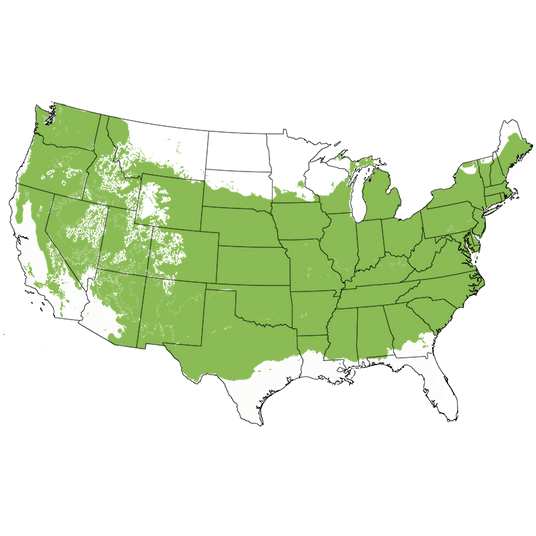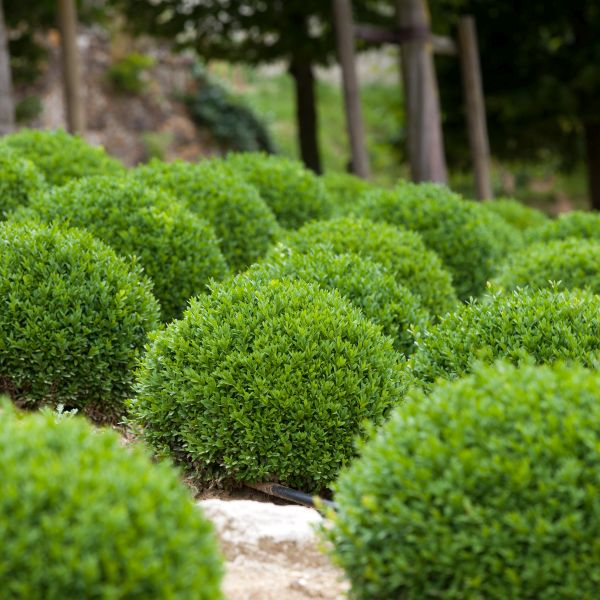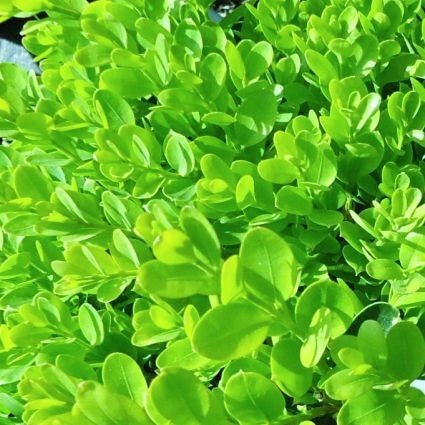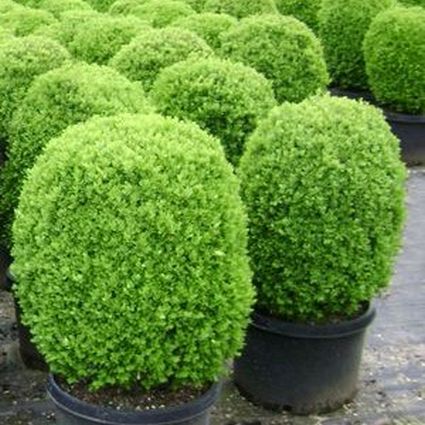Dwarf English Boxwood
Buxus sempervirens 'Suffruticosa'
Plant Sentry™
Plant Sentry™

Plant Sentry™ Protected
Your order is protected by our compliance system that:
- Prevents restricted plants from shipping to your state
- Ensures plants meet your state's agricultural requirements
- Protects gardens from invasive pests and diseases
Delivery and Shipping
Delivery and Shipping
Delivery and Shipping
Fast, Safe Plant Delivery
Ships in 3-4 business days • Tracking provided • Weather protected
| Under $50 | $9.99 |
| $50 - $99.99 | $14.99 |
| $100 - $149.99 | $16.99 |
| $150 - $198.99 | $24.99 |
| $199+ | FREE |
✓ Zone-specific timing • ✓ Professional packaging • ✓ Health guarantee
Understanding Plant Options
Nature Hills offers plants in two main formats:
- Container Plants: Grown in pots with soil, sized by container volume and plant age
- Bare Root Plants: Dormant plants without soil, sized by height measurements
Container Plant Sizes
Container sizes indicate plant age and growing capacity rather than liquid volume equivalents. Our containers follow industry-standard nursery "trade gallon" specifications, which differ from standard liquid gallon measurements.
Young Plants (6 months to 18 months old)
| Container Size | Actual Volume | Metric Equivalent |
|---|---|---|
| 2" x 2" x 3" | 0.18 - 0.21 dry quarts | 0.20 - 0.23 dry liters |
| 4" Container | 0.31 - 0.87 dry quarts | 0.35 - 0.96 dry liters |
| 4.5" Container | 0.65 dry quarts | 0.72 dry liters |
| 6" Container | 1.4 dry quarts | 1.59 dry liters |
| 1 Quart | 1 dry quart | 1.1 dry liters |
| 5.5" Container | 1.89 dry quarts | 2.08 dry liters |
Established Plants (18 months to 2.5 years old)
| Container Size | Actual Volume | Metric Equivalent |
|---|---|---|
| 2 Quart | 2 dry quarts | 2.2 dry liters |
| #1 Container | 2.26 - 3.73 dry quarts | 2.49 - 4.11 dry liters |
| 5" x 5" x 12" | 3.5 - 4.3 dry quarts | 3.85 - 4.74 dry liters |
Mature Plants (2-4 years old)
| Container Size | Actual Volume | Metric Equivalent |
|---|---|---|
| #2 Container | 1.19 - 1.76 dry gallons | 5.24 - 7.75 dry liters |
| #3 Container | 2.15 - 2.76 dry gallons | 8.14 - 12.16 dry liters |
Large Plants (3-5 years old)
| Container Size | Actual Volume | Metric Equivalent |
|---|---|---|
| #5 Container | 2.92 - 4.62 dry gallons | 12.86 - 20.35 dry liters |
| #6 Container | 5.25 - 6.01 dry gallons | 23.12 - 26.42 dry liters |
| #7 Container | 5.98 - 6.53 dry gallons | 26.34 - 28.76 dry liters |
Bare Root Plants
Bare root plants are sold by height from the root system to the top of the plant. Plants may exceed minimum height requirements.
Common Sizes:
- Trees: 1 foot, 2 feet, 3 feet, 4 feet, 5 feet, 6 feet
- Shrubs & Perennials: 1 foot, 18 inches, 2 feet
Important Notes
Container Volume Specifications
- Trade Gallon Standard: Our containers follow industry-standard "trade gallon" specifications established by the American National Standards Institute (ANSI Z60.1) for nursery stock
- Volume Variations: Actual soil volume may vary due to plant root systems and growing medium settlement
- Age Indicators: Container size primarily indicates plant age and maturity rather than liquid volume equivalents
Growing Conditions
- Plant size can vary based on variety and growing conditions
- Container size helps indicate plant maturity and establishment level
- Larger containers generally mean more established root systems and faster landscape establishment
Seasonal Availability
- Bare root plants are available seasonally when dormant
- Container plants are available throughout the growing season
- Specific varieties may have limited availability in certain sizes
Questions?
For questions about specific plant sizes or availability, please contact our plant experts who can help you choose the right size for your landscape needs.

Plant Sentry™ Protected
Your order is protected by our compliance system that:
- Prevents restricted plants from shipping to your state
- Ensures plants meet your state's agricultural requirements
- Protects gardens from invasive pests and diseases
Plant Profile & Growing Essentials
Cold hardy, Deer-resistant, Evergreen, Fast-growing, Attracts pollinators, and Flowering
Specifications
Specifications
-
Botanical Name
-
Height
-
Width
-
Growing Zones
-
Sunlight
-
Growth RateModerate
-
Flower Color
-
Leaf Color
-
Fall Color
-
Pollinator FriendlyYes
-
FragrantYes
-
Bloom PeriodEarly Spring
-
Does Not Ship ToAK, HI, ID, MT, OR
Planting & Care
Planting & Care
Dwarf English Boxwood: A Classic Shrub for Every Landscape
Looking for a low-maintenance, broadleaf evergreen shrub that brings timeless elegance to your yard? Meet the Dwarf English Boxwood (Buxus sempervirens 'Suffruticosa')! A compact, slow-growing shrub loved for its tidy, rounded shape and lush green year-round foliage.
Ideal for small gardens, borders, or container planting, this shrub is a versatile staple for any landscape design. Rely on the Dwarf English Boxwood to give easy character - whether you keep it tightly trimmed or allow new growth to cloud up into fluffy little tufts.
Dwarf English Boxwood elevates the tone of your plantings with a lush color and soft texture without the need for special care or maintenance.
>>Jump to Planting & Care Instructions
Why Choose Dwarf English Boxwood?
Dwarf English Boxwood is a broadleaf evergreen with tiny, glossy, dark green leaves that are soft to the touch and stay green all year long. When you need a beautiful way to polish up your landscape, use this versatile charmer.
- Compact Size: Perfect for smaller spaces, patios, or as low hedges.
- Year-Round Beauty: Retains its dense, glossy green foliage throughout the year.
- Easy Care: Low-maintenance and thrives in a variety of conditions.
- Versatile Use: Great for formal gardens, borders, topiaries, or container displays.
- Durable and Hardy: Performs well in USDA zones 5-9 with proper care.
Landscape Uses For Dwarf English Boxwood
This is a classic plant that stays small with or without pruning.
- Low Hedges: Create defined borders for walkways or garden beds. For a neat, dense, hedge, plant these Dwarf English Boxwood hedges 12-18 inches on center. You'll measure from the center of one to the center of the next.
- Foundation Plantings: Add structure and elegance around your home. Dwarf English Boxwood makes the best low-growing, definition and edging!
- Formal Gardens: Use in symmetrical designs or parterres for a classic look. Formal English knot gardens are an outstanding focal point. Use these compact Boxwood all-along foundations or front walks.
- Container Displays: Perfect for patios, porches, or framing doorways. If you are feeling adventurous, you can even use these in containers for the patio. These make excellent sheared spheres to use as a small accent.
- Topiary Art: Shape into spheres, cones, or other forms for a refined touch. They'll make cunning little bonsai plants or topiaries, as well.
This slow-growing, true dwarf Boxwood features a useful compact shape that is such a versatile asset in landscape design.
Boxwood Care & Maintenance
English Boxwood is particularly resistant to Boxwood Leaf Miners and is generally quite hardy. It's even long-lived, and under optimal conditions can be expected to thrive for up to 150 years.
- Sunlight: Prefers partial to full sun; tolerates shade in hotter climates.
- Soil: Thrives in well-drained soil with consistent moisture. Avoid waterlogging.
- Watering: Water regularly during the first growing season to establish roots. Mature plants are drought-tolerant but benefit from occasional deep watering.
- Prune or Shear: Lightly prune in late spring to maintain shape. Avoid heavy pruning to protect foliage. Or keep them unsheared for a tidy natural look
- Mulching: Apply a 2-3 inch layer of mulch to retain soil moisture and regulate temperature.
Hardy, Versatile Evergreen Dwarf English Boxwood!
When you buy Boxwood from Nature Hills, you are buying healthy, established root systems. Our expert growers love Boxwood and take care to grow and develop the important foundation - the root system - of these hardy plants. We always recommend a bag of Nature Hills Root Booster added to the planting hole for every plant.
You'll adore these sweet little workhorses. Like a setting on a ring, these small plants allow your colorful planting to shine. Order enough Dwarf English Boxwood to complete your project today from Nature Hills Nursery!
Frequently Asked Questions
How far apart should Dwarf English Boxwoods be planted?
For a neat, dense, formal hedge, plant Dwarf English Boxwood shrubs 12-18 inches on center. You'll measure from the center of one to the center of the next. Space or informally group in 3’s and 5’s for a more naturalized or informal hedge.
How big do Dwarf English Boxwoods get?
Dwarf English Boxwood grows to about 1-2 feet in both mature height and width when left unpruned.
What type of Boxwood stays small?
Dwarf Boxwood in addition to Little Missy is the smallest, while other varieties stay waist-high or under. All Boxwood can be kept pruned and sheared to about any size you need!
How long does it take Dwarf English Boxwoods to grow?
The moderate growth rate of Boxwood makes them especially easy-care and low-maintenance. Dwarf English Boxwood grows approximately 1-2 inches a year in optimal conditions.
What shipping options do you offer?
NatureHills.com works closely with our growers and nursery professionals to ensure we ship when it is most appropriate for your area. Our goal is to deliver the hardiest plants by avoiding extreme high and low temperatures. Check out our shipping schedule for more information and to learn our wills and won’ts when it comes to shipping plants. Find your Dwarf English Boxwood for sale here at NatureHills.com!













